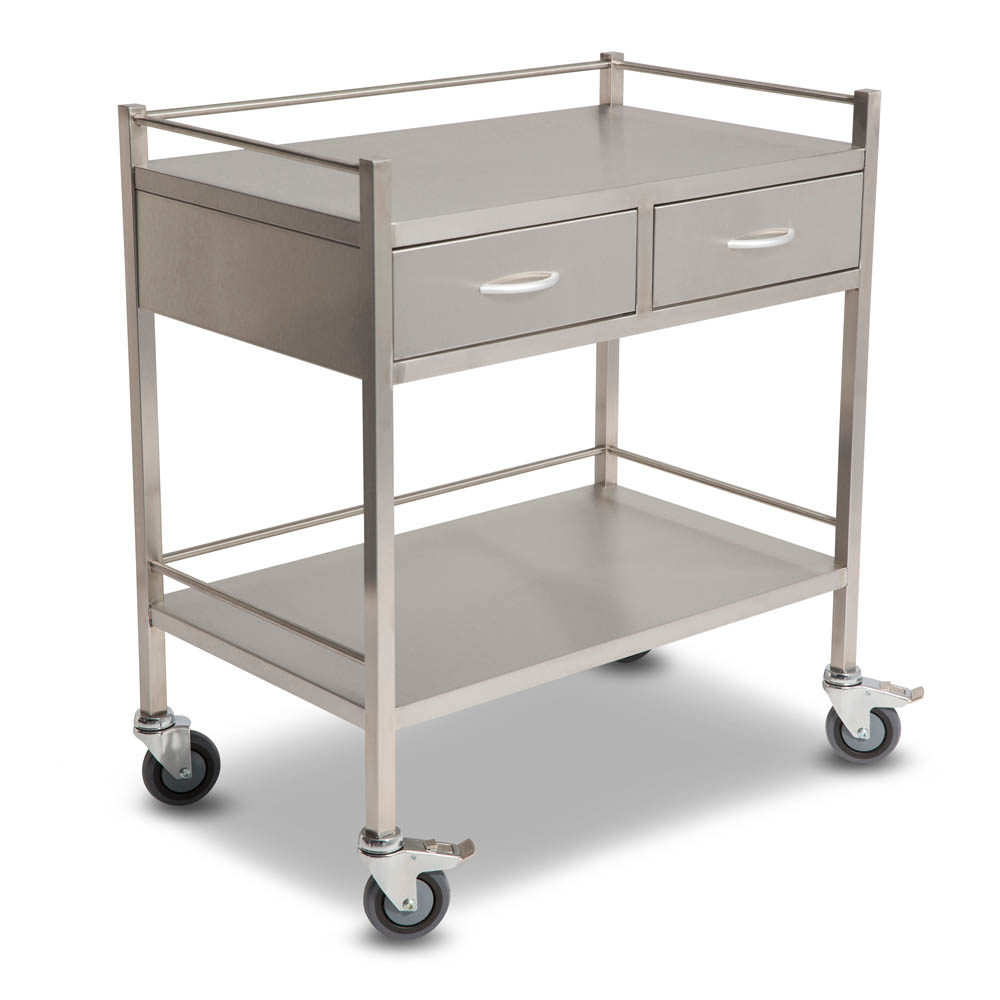| Materal: | |
|---|---|
| Size: | |
| Drawers Size: | |
| Castors (2 Locking): | |
| Availability: | |
| Quantity: | |

The stainless steel unity cart is designed with a knock-down construction, allowing for easy assembly and disassembly.
It is made from mild steel tube with an epoxy powder-coated finish, ensuring durability and resistance to corrosion.
This construction makes the cart sturdy and suitable for long-term use in a hospital environment.

The medical instrument cart features reinforced safety shelves with safety fold to three side raised edges.
This design prevents items from accidentally falling off the shelves during transportation, ensuring the safety of equipment and supplies.
The raised edges provide an additional layer of security, keeping items securely in place.

The hospital utility cart is mounted on four 10cm diameter anti-static castors, allowing for smooth and effortless movement.
The castors are designed to minimize static electricity build-up, making the cart suitable for sensitive electronic equipment.
The front two wheels are lockable, providing stability and preventing unintentional movement when the cart is stationary.

The medical equipment cart is equipped with two 125mm deep drawers that offer ample storage space for hospital equipment.
The drawers feature German-made ball bearing drawer runners, ensuring smooth and silent operation.
This allows for easy access to stored items and efficient organization of supplies.

The stainless steel unity cart is designed with a knock-down construction, allowing for easy assembly and disassembly.
It is made from mild steel tube with an epoxy powder-coated finish, ensuring durability and resistance to corrosion.
This construction makes the cart sturdy and suitable for long-term use in a hospital environment.

The medical instrument cart features reinforced safety shelves with safety fold to three side raised edges.
This design prevents items from accidentally falling off the shelves during transportation, ensuring the safety of equipment and supplies.
The raised edges provide an additional layer of security, keeping items securely in place.

The hospital utility cart is mounted on four 10cm diameter anti-static castors, allowing for smooth and effortless movement.
The castors are designed to minimize static electricity build-up, making the cart suitable for sensitive electronic equipment.
The front two wheels are lockable, providing stability and preventing unintentional movement when the cart is stationary.

The medical equipment cart is equipped with two 125mm deep drawers that offer ample storage space for hospital equipment.
The drawers feature German-made ball bearing drawer runners, ensuring smooth and silent operation.
This allows for easy access to stored items and efficient organization of supplies.
Have you ever considered how environmental design directly impacts behavioral symptoms, medication requirements, and quality of life outcomes for dementia patients? Research demonstrates that thoughtfully designed dementia-friendly environments reduce behavioral incidents by 30-50%, decrease medicat
Have you ever questioned whether your elderly care facility is investing in the right seating furniture to support resident comfort, independence, and clinical outcomes? Studies demonstrate that proper seating selection impacts fall prevention, pressure ulcer development, and patient mobility outcom
Have you ever hesitated to seek gynecological care because of anxiety about privacy or dignity concerns during intimate examinations? Research demonstrates that privacy concerns prevent approximately 30-40% of women from seeking routine gynecological care, delaying critical preventive health screeni
Have you ever walked into a healthcare facility and immediately felt either at ease or anxious based on the environment alone? Studies consistently show that clinic design directly impacts patient anxiety levels, with well-designed gynecology clinics reducing pre-appointment stress by 30-40%. Yet ma
Dining spaces in assisted living facilities are more than just areas to eat—they are social hubs where residents interact, participate in group activities, and maintain a sense of community. Choosing the right furniture in these spaces is critical, not only for comfort but also for safety, accessibi
The healthcare and elderly care furniture industry is undergoing a profound transformation driven by material innovation. In 2025, the demand for safety, durability, hygiene, and sustainability is shaping the next generation of medical and senior living environments. Hospitals, clinics, and nursing